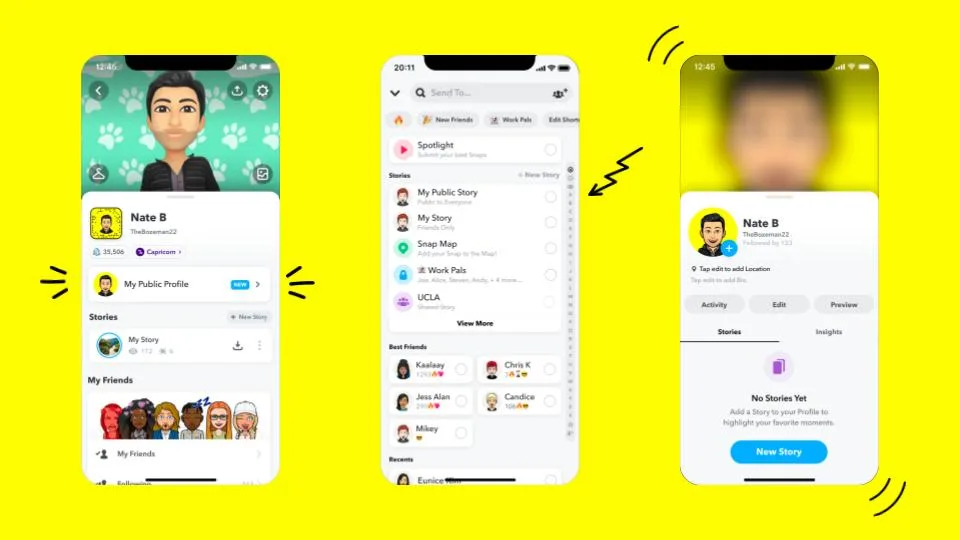The app is also adding new public-facing profiles and Stories.
Snap, once happy to let creators take a backseat to users’ friends and family, is making a new push to bring more creators onto its platform. The app is expanding its revenue sharing program and adding new public-facing features to help creators get started and get discovered in the app.
Snapchat first introduced mid-roll ads as a way for some of its Snap Stars to earn money from their Stories last year. Now, the company says that creators with at least 50,000 followers, 25 million monthly views and at least 10 Stories posts a month “may be eligible” to participate in the revenue-sharing arrangement. Presumably, the company is still reserving the right to greenlight individual users into the program, but the metrics at least give budding creators a target to shoot for.
The program isn’t the only way creators can earn money from Snap, but sharing in ad revenue has long been top creators’ preferred way to get paid as it tends to be the most reliable. The company also has a music-focused creator fund and pays users for popular Spotlight content.

Snap
For those who aren’t yet getting views in the millions, Snap is also adding new public-facing profiles and Stories, which will be available to any user over the age of 18. The changes allow users to share both private “friend” content and publicly viewable Stories from the same account, along with analytics and other metrics. As Snap notes, this gives users a pathway to becoming a more prolific creator even if they aren’t yet eligible to become a Snap Star. Users can also save Stories posts and specific snaps to their public profile, the first time the app has enabled non-ephemeral snaps and Stories.
The features are also one of the most notable ways that Snap has blurred the lines between public content and friend content. The company has long bragged about its origins as a messaging app for “real friends” and said that disappearing messages reduce the kinds of social pressure often associated with its rivals. But those constraints aren’t necessarily conducive to successful — or well paid — creators. Now Snap is trying to find a ways to make both possible.